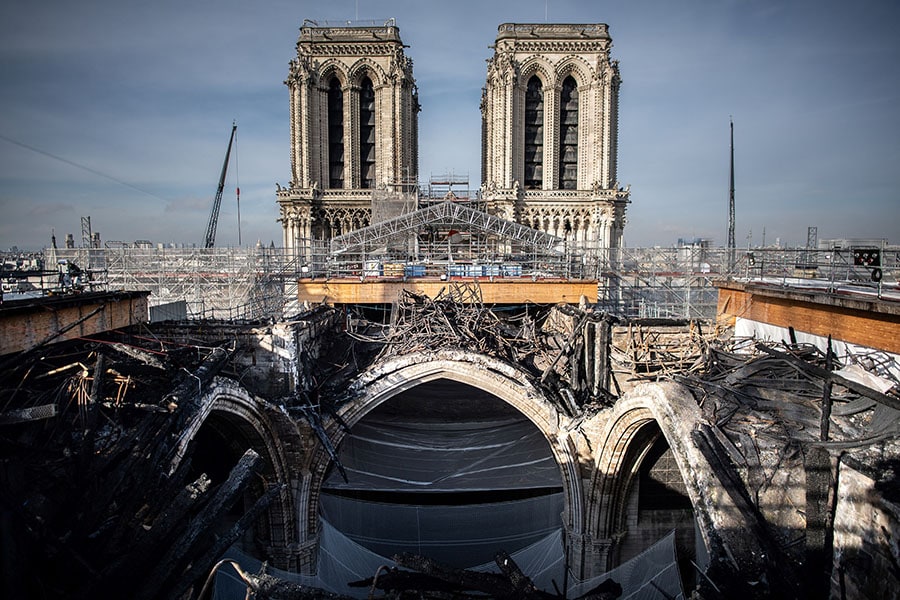
Notre Dame slowly reviving three years after the fire
The inferno that engulfed the 12th-century Gothic landmark on April 15, 2019, caused its central frame to collapse and ravaged the famous spire, clock and part of the vault—shocking millions around the world
 The Notre Dame cathedral typically welcomed nearly 12 million visitors a year, as well as hosting 2,400 services and 150 concerts. Image: Shutterstock
The Notre Dame cathedral typically welcomed nearly 12 million visitors a year, as well as hosting 2,400 services and 150 concerts. Image: Shutterstock
Three years after the devastating fire, Notre-Dame cathedral in Paris is mostly cleared of a thick layer of soot as an army of craftsmen race to meet a deadline to reopen in time for the 2024 Olympics.
Ahead of the anniversary of the blaze on Friday, the mammoth cleaning job of the walls, vaults and floor is almost completed, restoring the cathedral to its original whiteness.
The inferno that engulfed the 12th century Gothic landmark on April 15, 2019 caused its central frame to collapse and ravaged the famous spire, clock and part of the vault— shocking millions around the world.
The cathedral typically welcomed nearly 12 million visitors a year, as well as hosting 2,400 services and 150 concerts.
As an icon of the globally beloved city, the fire triggered an outpouring of generosity with nearly 844 million euros in donations collected from 340,000 donors in 150 countries to date, according to the public body overseeing the restoration.




